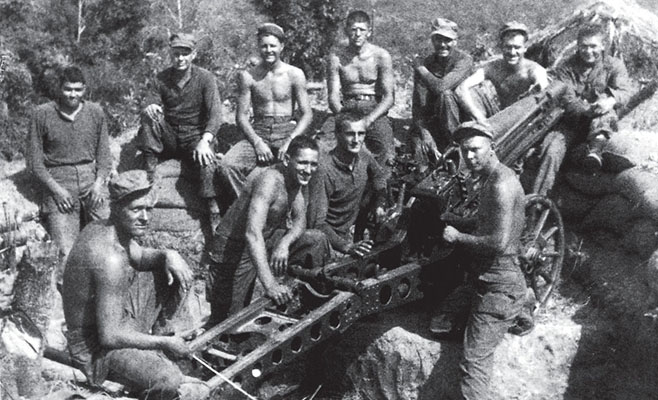DOWNLOAD
When MARS Task Force was formed in November 1944 to combat the Japanese in Burma, it comprised not only infantry and quartermaster troops, but also the 612th and 613th Field Artillery Battalions (Pack). It had been noted that the Merrill’s Marauders could have used considerably more firepower during their campaign, so when the 5332nd Brigade (Provisional) formed, it took along 75mm Pack Howitzers and the men and mules needed to transport and fire them.
In organizing pack artillery units, the Army carefully selected both men and mules for height (minimums 5’10” and 14¾ hands respectively) and sturdiness (not dead and one thousand pounds respectively). By the time the 612th and 613th arrived in Burma, all members had been thoroughly trained—the men in mule packing and the mules in … walking. The men were intimately familiar with the strengths and foibles of their four-legged companions, and the mules had developed a reasonable tolerance for the men—especially around feeding time.
By the end of the task force’s trek, men and mules had walked hundreds of miles, crossing streams and rivers (one particular stream almost fifty times in one day), climbing and descending mountains, hacking through jungle undergrowth, and slogging through rice paddies. They had routed the Japanese and reopened the supply line to China. Though often forgotten in the trek’s recounting, the mountain artillery boys, their 75mm Pack Howitzers, and their trusty mules were key to the entire campaign’s success. Here are a few glimpses of what it was like to be in the pack artillery in Burma.
Cannoneers could assemble or disassemble the gun in five minutes, mule to firing position. “To load this small Howitzer, the mules who carried a piece of the gun were placed in a circle around the gun. There were seven mules for the job. As the mule handler received his portion of the gun he would move clear, and when the wheels were placed on the last mule, the gun was ready to be moved to its next firing position.” — Ken Laabs (B/612)
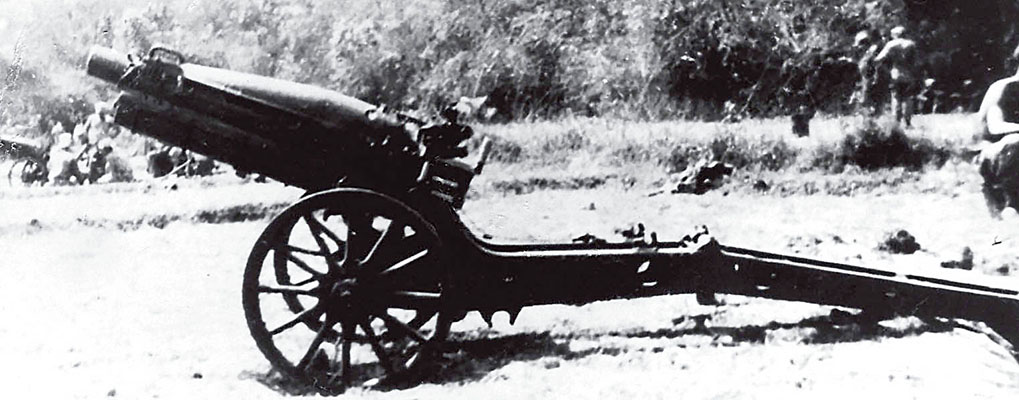


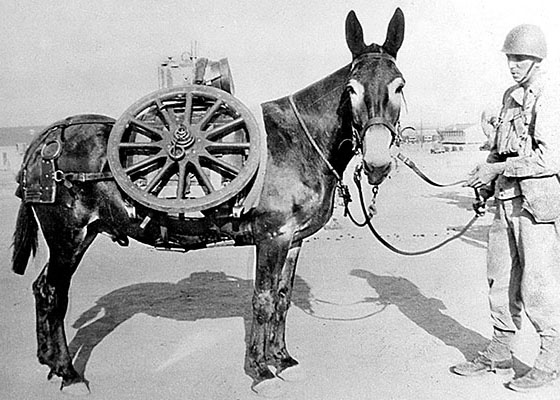

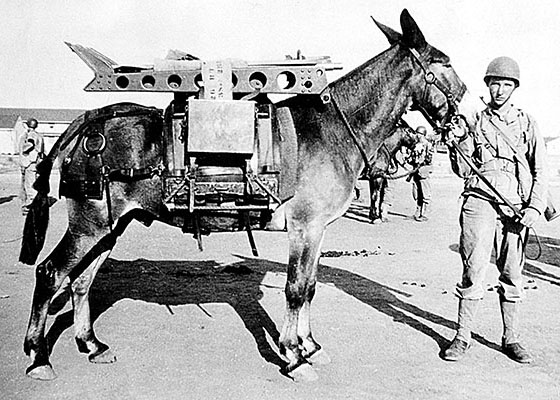

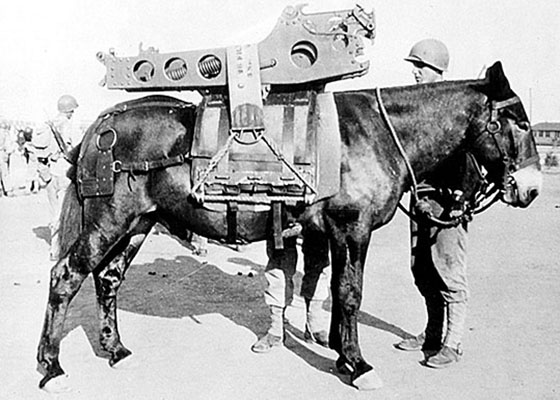
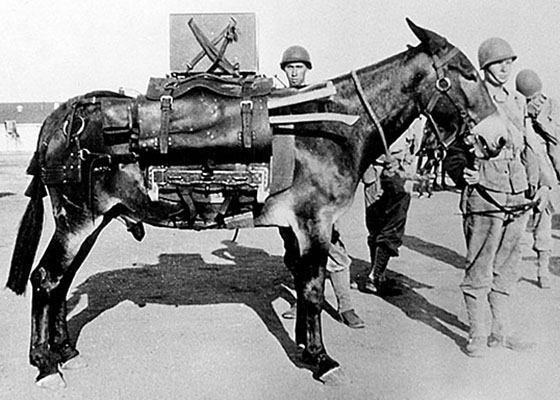

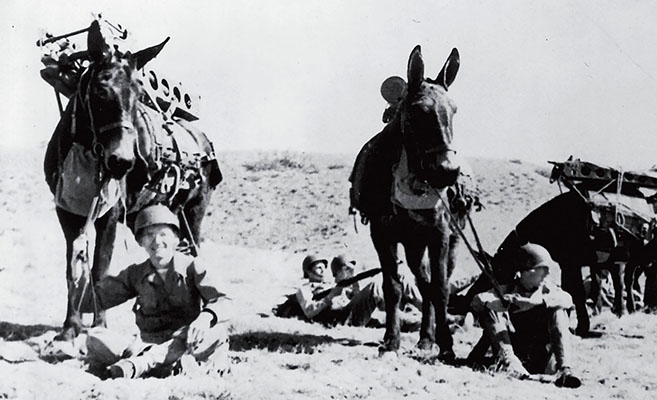
![“En route to present location, [the] battalion encountered on many occasions almost impassable terrain. Many times paths had to be constructed so as to allow the traffic of animals. Animals and loads were lost. Gun loads that had been so lost had to be retrieved under very difficult circumstances, and much time was spent doing so. The battalion marched long into the night and were finally forced to rest in place to await daybreak, since the repairs of such impediments were impossible in darkness. The battalion rested from 0430 to 0615, then continued on to present location.” — 16-17 January 1945, 612th FA Battalion Daily Journal](images/v1n2_mules_and_men/800/crossing_bridge.jpg)
